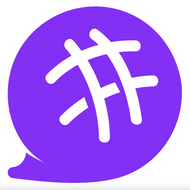Have you ever come across strange-looking text like \u0939\u093f\u0902\u0926\u0940 and wondered what on earth that is? Or maybe you've copied some stylish or glitchy-looking text from the internet and thought: “How is this even typed?”
Well, chances are you’ve stumbled into the world of Unicode — and that’s where a Unicode Converter or Unicode Text Converter comes in.
Let’s break it all down in a simple, friendly way so you not only understand Unicode but also how these converters can actually help in your day-to-day digital life.
✅ First Things First: What is Unicode?
Unicode is like the universal language of computers. It’s a standardized system that gives every character — letter, symbol, emoji, etc. — a unique number so that computers all over the world can display and understand text correctly.
Whether it's English, Hindi, Arabic, Chinese, emojis, or mathematical symbols — Unicode supports over 150 scripts and more than 140,000 characters.
Without Unicode, your name written in a different language might show up as a bunch of weird boxes (�) or question marks (???).
💡 So What is a Unicode Converter?
A Unicode Converter is a tool that helps you convert text into Unicode format (and vice versa). It’s like a translator — but instead of translating between languages, it converts between text and the underlying Unicode code points.
There are generally two main types:
Unicode Text converter to Unicode Code:
You input normal text, and it shows you the Unicode representation.
Example: “Hi” becomes \u0048\u0069
Unicode Code to Text:
You input the Unicode values, and it converts them back into readable text.
Example: \u0939\u093f\u0902\u0926\u0940 becomes “हिंदी”
🧠 Why Would Anyone Need a Unicode Converter?
You might be thinking, “Cool… but why would I ever need this?”
Here are some real-life use cases:
- 💬 Developers
Software developers often work with Unicode when building websites, mobile apps, or databases. A Unicode converter helps them:
Encode text in a way machines understand
Escape special characters safely (like in JavaScript or JSON)
Debug issues where characters aren’t displaying properly
- 🌐 Translators and Linguists
Working with different languages? Unicode converters help check encoding and ensure correct representation of scripts like Devanagari, Arabic, Chinese, etc.
- 🎨 Content Creators
You’ve probably seen fancy text on Instagram or Twitter, like 𝓕𝓪𝓷𝓬𝔂 𝓕𝓸𝓷𝓽𝓼. These are often Unicode variants of normal letters. A Unicode Text Converter helps you generate stylish, glitchy, or aesthetic text for bios, captions, and more.
- 📊 Data Scientists / Analysts
Working with datasets containing multilingual text? Unicode converters help clean, normalize, or encode/decode that text properly before analysis.
⚙️ How Does a Unicode Converter Work?
Behind the scenes, each character is mapped to a code point — a unique hexadecimal or decimal number.
For example:
The letter A is U+0041
The heart emoji ❤️ is U+2764 U+FE0F
The Hindi word “नमस्ते” becomes \u0928\u092e\u0938\u094d\u0924\u0947
A Unicode Converter simply takes your input and shows the corresponding mapping — or converts it back to readable form.
🛠️ Unicode Text Converter: A Special Mention
The term Unicode Text Converter is often used to refer to converters that deal specifically with transforming normal text into stylized Unicode text — the kind you see on social media.
These converters don’t change the meaning of the text; they just change the font style using different Unicode characters that look similar.
For example:
Normal: hello
Bold Unicode: 𝐡𝐞𝐥𝐥𝐨
Italic Unicode: 𝘩𝘦𝘭𝘭𝘰
Glitch text: h̷e̷l̷l̷o̷
These are especially popular on:
Instagram bios
TikTok usernames
Discord nicknames
YouTube comments
It’s a fun way to stand out — and completely safe since it uses official Unicode characters.
🔐 Is Unicode Safe to Use?
Absolutely — Unicode is built into all modern devices, browsers, and apps. The only time you might run into problems is when:
You're using software that doesn’t fully support Unicode (very rare today)
Or if you're trying to store Unicode in a non-Unicode database (an issue for developers)
Otherwise, it’s safe, standardized, and widely accepted.
📌 Things to Keep in Mind
Unicode can sometimes look weird if the font you're using doesn’t support certain characters.
Overuse of stylized fonts might make text hard to read or inaccessible.
For technical work, always test Unicode output before using it in code or config files.
🔚 Final Thoughts
In a digital world that’s becoming increasingly global, tools like Unicode Converters and Unicode Text Converters are more relevant than ever. Whether you're a developer, a content creator, or just someone who loves cool fonts, there’s a Unicode tool out there that can make your life a little easier — or at least a lot more fun.



Top comments (0)